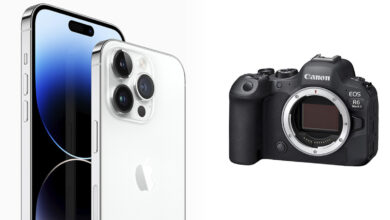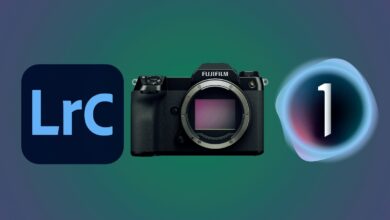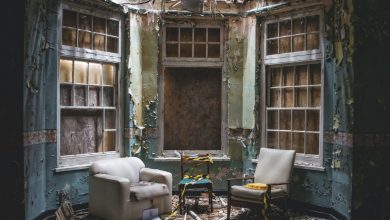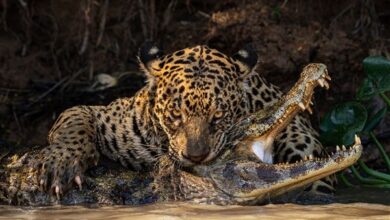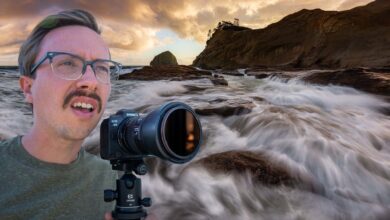How Pro Photographers Find Stunning Landscape Images
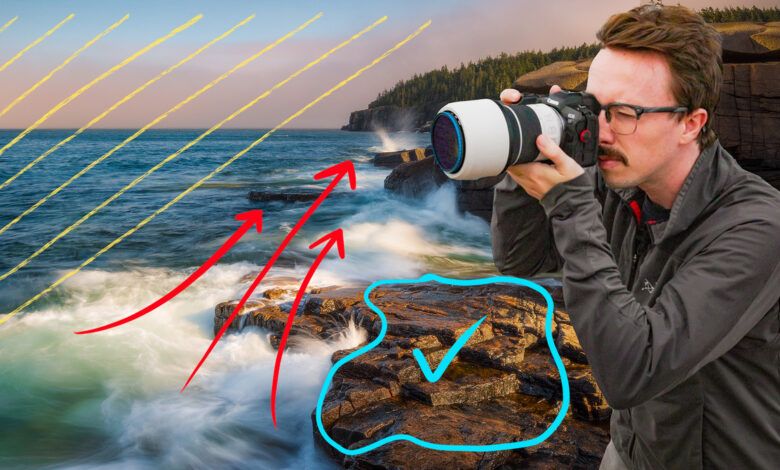
Have you ever wondered what goes through the mind of a professional photographer when searching for unique compositions? In this article, I break down my entire thought process of how I find, compose, and build an image from start to finish.
Many times when I’m looking for images, there’s something happening in the image that I really want to photograph – this is basically the definition of photography. What sets a landscape photographer apart from someone just walking by and snapping an image is how they present what is happening to the viewer with context. Some might call this “telling a story.” So when I walked up to this image, there were a few things that immediately stuck out to me that felt unique and that I wanted to photograph.
The first one was this fog in the distance near the hillside. The next was how blue the water appears in this warm summer light. The last main element was this bit of warm light illuminating the scene, which felt somewhat rare in my time in Acadia National Park since all I’ve really experienced is fog and overcast. I know this because I had been in Acadia for over 10 days, and this was the only day I had gotten any golden hour light.
After deciding what elements I wanted to include in the image, now the puzzle was to put them together. Ideally, my foreground element would be something interesting that shows the light and waves while leading my viewers’ eyes back into the distance to the foggy hillside. This is where seascapes can be a bit difficult and something I’ve talked about in the past. Finding wave patterns that help create your composition is a skill that just takes practice and patience.
This evening, I found a cascade of rocks, almost resembling Legos, that not only were catching a bit of warm light but were also shaped by a layer of waves that, with the right wave, led my viewers’ eyes right to that hillside like we envisioned.
I got my camera and tripod out and started looking for strong compositions, but note how I’m not using my tripod yet because I don’t want to set anything up until I know the shot I want to take. The tricky part about many seascape images is that you typically want to be really close to the waves to fill the bottom part of your frame, but you also don’t want to put yourself in any danger. This is a dance as old as time, wanting to get as close to the action as possible without risking too much of your equipment. You can see here how close I get to the waves and actually end up backing off a bit because I’m a little concerned about a large wave compromising my position (and my camera). I can’t overstate how easy it is to get caught by a random large wave. My best piece of advice is to arrive early and spend time watching the tide before ever getting your camera out.
My first shots were landscape orientation, and this does a great job at including all the original elements we want within the image. The foggy hill (that now doesn’t have fog on it, ironically), the warm summer light, and those blue waves creating a diagonal line through my image. We even get a small bonus of the cliff face in the middle of the image to add more depth within the image. The issue with this composition is there’s a lot of dead space in the top left of the frame, and I’m not in love with it. I keep trying this shot and even move to a higher vantage point when I felt like the waves were getting a bit too close for comfort.
While I was able to find some nice lines in the waves from this vantage point, it exacerbated that area of dead space. The best way to remove a lot of that dead space is to fill up more of my frame with the foreground waves, which comes at the cost of being a bit more risky. Thus, I went back down closer to the waves and tried a few portrait-oriented compositions.
By switching to a portrait orientation, it eliminates a lot of that empty space and also gives the chance for the waves to create a perfect guiding line through the image like this. Wonderful, this was everything I wanted. I’ve eliminated much of the dead space, we have a nice leading line through the composition, and all of our important elements are still in the image. Yet… this is not the image I decide to edit.
Now you might be asking yourself, “Why did you show me all of these compositional ideas when you ended up throwing them out the window?” The lesson here for me is that I was very focused on trying to find waves that created a perfectly timed line through my images, that I didn’t properly recognize how unique this cascading rock face was in front of me.
Thus, when I got back to review my images, I actually ended up preferring the earlier snaps that mixed both the waves and the rock face to combine into my leading line of the image. The rocks also give a more significant sense of place, specifically Acadia National Park, whereas by hiding them in a wave, the image feels a little more generic. On top of that, right when I arrived likely had the best light as the fog rolled off, and I lost the light on the water and rock faces pretty quickly, and in photography – lighting trumps all. The fog in the distance also helps reduce the feeling of dead space in the top left part of the frame, which is non-existent in the later images. The portrait orientation does have stronger compositional elements to it, and if I had shot those from the beginning, my final image might have been even better.
Regardless of which image felt the strongest in my editing suite, the breakdown of my thought process remains the same. If you watch the video in the article, you’ll find a breakdown of another image that required very specific conditions to achieve. I would love to know your thoughts on this format and if it was helpful in your own journey as a landscape photographer.
